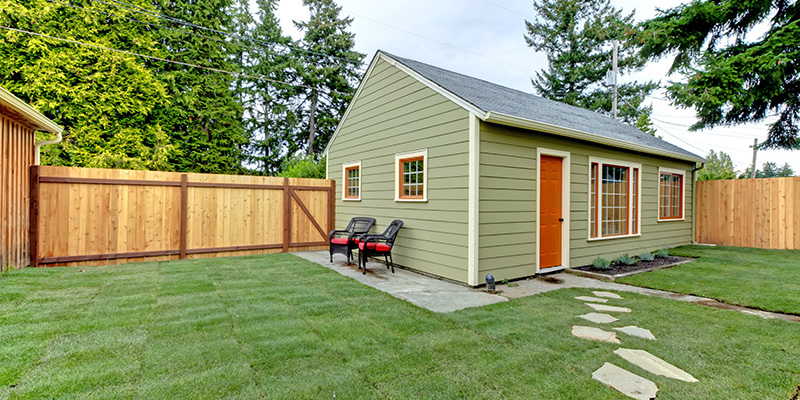California Accessory Dwelling Unit Law: What’s It All About?

The state of California has passed six bills. This makes it easier for homeowners to construct accessory dwelling units on their property. Here’s what you need to know about the California Accessory Dwelling Unit Law.
Browse By Category
Sign up for Our Newsletter
The state of California has passed six bills. This makes it easier for homeowners to construct accessory dwelling units on their property. Here’s what you need to know about the California Accessory Dwelling Unit Law.
Why Is There a Need for California’s Accessory Dwelling Unit Law?
What is an ADU? Before tacking California’s new laws, here is a brief introduction to accessory dwelling units.
Accessory Dwelling Unit Definition
An accessory dwelling unit (ADU) is a detached residential structure built on the same lot as a single-family home. ADUSs or granny units or backyard cottages come with with living facilities such as kitchens and bathrooms.
There are also additional types of ADUs:
- Attached: The ADU is attached to the primary structure such as an apartment over the garage.
- Converted: It is existing space on the primary structure. For instance, the basement or a storage area is converted into an independent living space.
- Junior ADU: An existing space within the primary structure, such as a bedroom, is converted into an independent living space.
Accessory dwelling units have been very popular among homeowners. They have many benefits including an additional source of income for homeowners, higher property values, independent living spaces for family or friends of homeowners, and affordable housing for low-income families. However, building ADUs is not always easy. Many cities and counties have local ordinances that place financial and structural restrictions on ADUs.
To address the housing crisis in the more populated areas of California, Governor Gavin Newsom has passed six ADU bills into law. The new California ADU laws, which took effect on January 1, 2020, remove most of the restrictions that made it difficult for homeowners to build ADUs.
What Is California’s Accessory Dwelling Unit Law All About?
Here is a summary of the recent changes to California’s ADU law.
Assembly Bill 68, Assembly Bill 881, and Senate Bill 13
- Local agencies cannot impose minimum requirements for accessory dwelling unit floor plans, lot coverage, and open spaces.
- Local agencies can establish a maximum size for ADUs but it cannot be less than 850 square feet for a one-bedroom and 1,000 square feet for more than one bedroom.
- The approval process has been streamlined so that instead of 120 days, local agencies will have to approve or deny applications within 60 days.
- ADUs that are smaller than 750 square feet are exempt from impact fees. Local agencies may charge an impact fee for larger ADUs but it should be proportional to the size of the primary structure.
- Off-street parking spaces are no longer required if the garage or carport is converted into an ADU.
- The owner-occupancy requirement, which stated that homeowners must occupy the primary structure or ADU, cannot be imposed until January 1, 2025.
Assembly Bill 587 and Assembly Bill 671
- Local agencies can adopt an ordinance that allows the separate sale of ADUs from the primary structure. For this ordinance to take place, the primary structure and ADU must be built as low-income housing by a qualified non-profit organization.
- Local agencies must create a plan that incentivizes and promotes the construction of ADUs. The California Department of Housing and Community Development (HCD) will develop a list of financial grants and incentives to promote affordable ADUs.
California HOA Laws Regarding ADUs
 The new accessory dwelling unit California laws also include a stipulation for HOA communities.
The new accessory dwelling unit California laws also include a stipulation for HOA communities.
Assembly Bill 670 voids any restrictions that an HOA may have in its governing documents that prohibit the construction or use of ADUs on single-family homes. Thus, it is now easier for homeowners to create HOA granny units or secondary dwelling units on their property.
HOAs are also prohibited from enforcing restrictions that unreasonably restrict the construction of ADUs — such as high construction costs. However, there are no guidelines on what restrictions are considered “reasonable.” As such, HOAs could still implement requirements related to the size and design of ADUs, the architectural application process, and the use of communal facilities.
Does California’s Accessory Dwelling Unit Law Apply to My State?
The new changes to the ADU law are only applicable to California. However, many other states such as Oregon, Colorado, Minnesota, Utah, and Tennessee have their own ordinances when it comes to ADUs. It’s important for HOAs to consult their local governments to see whether there are new ordinances regarding the construction of ADUs.
The Purpose of California’s Accessory Dwelling Unit Law
The main purpose of California’s new ADU laws is to address the housing crisis in many parts of the state. However, constructing ADUs can be very beneficial for homeowners. By renting their ADUs to low- and moderate-income families, homeowners can also create an additional stream of income. This can offset some of the costs of owning a home, which can be crucial during times of economic downturn or a pandemic. Is ADU the right move for you? Take time to read through California’s accessory dwelling unit laws first.
RELATED ARTICLES:
- How To Change HOA Bylaws, Covenants, And Rules
- What Are Unenforceable HOA Rules? What To Do About Them?
- California AB 2273 Bill Has Passed, What Does It Mean?
Trending Now
Related Article
Sign up for Our Monthly Newsletter
Sign up below for monthly updates on all HOA Resource
















